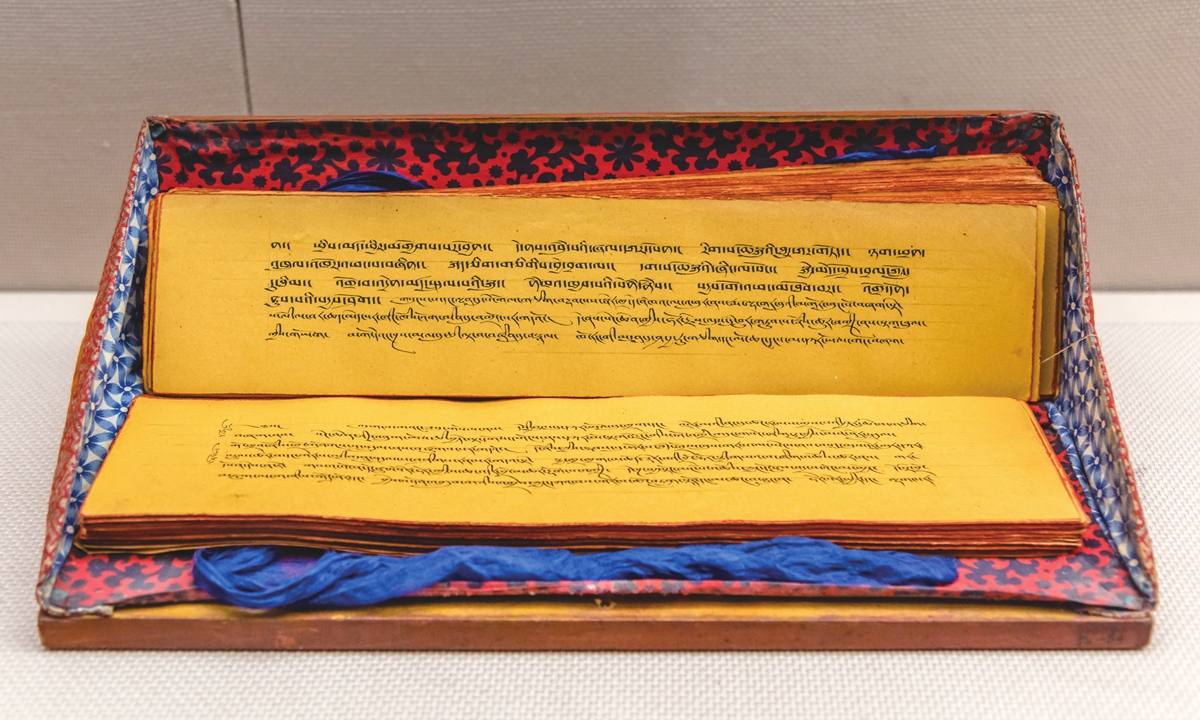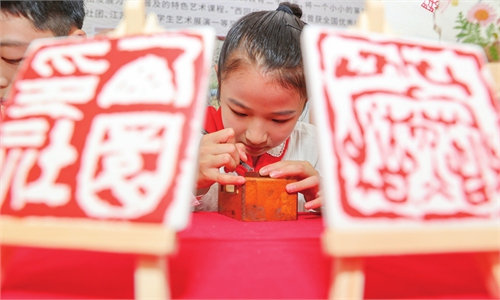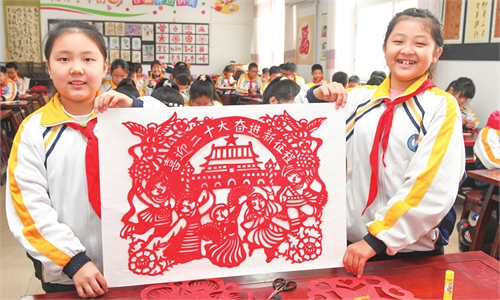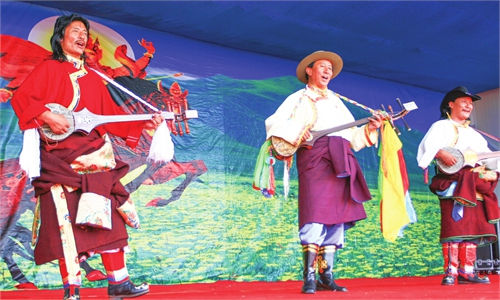ARTS / CULTURE & LEISURE
Cultural Heritage

A copy of The Epic of King Gesar at the Chengdu Museum in Chengdu, Sichuan Province Photo: IC
'The Epic of King Gesar'(II): Longest epic in the world about ethnic Tibetan heroThe Epic of King Gesar integrates legends, folk songs, aphorisms and slang and features a diversified, vigorous and magnificent artistic style, exquisite structural arrangement and vivid descriptions. Throughout more than 80 named tunes, folk artists incorporate intonation, expressions and gestures in their narrative and singing performances. The epic represents the thoughts and feelings of the common people through their heroes, deities and ancestors, inspiring literary and artistic creation.
Unlike some other folk arts that were passed down orally, the Tibetans have their own unique ways to inherit the epic such as listening to the performances of others, digging the story from one's mind, divine right from a dream and divining the story by examining a bronze mirror.
There are more than 100 official performers of the epic in the Xizang Autonomous Region.
Thanks to the performers, who are usually folk artists, lamas or learned people in the local areas, this epic has been carried forward for 1,000 years in the rural and pastoral areas of the seven provinces and autonomous regions in western China, including the provinces of Qinghai, Gansu, Sichuan and Yunnan, and the autonomous regions of Inner Mongolia, Xizang and Xinjiang. The epic is performed at all major festivals and even on some informal occasions. In order to attract audiences, the performers often hang out the paintings of the characters while telling the story. Known as zhongtang in Chinese, these are the earliest Thangka paintings (Tibetan paintings on cotton or silk ) about King Gesar.
To preserve this valuable cultural heritage, since the 1950s the Chinese government has adopted many measures, such as compiling literature related to the epic, translating and publishing the work, setting up a state-level social sciences fund, filming documentaries and holding academic seminars.
Starting from the 1980s, some senior folk artists in Xizang have been invited to have their performances recorded. In January 2022, the Chinese translation of The Epic of King Gesar was launched, marking the completion of this huge project.
As an encyclopedia of Tibetan society and history, The Epic of King Gesar represents one of the highest achievements ever attained in Tibetan culture. It is also one of the great contributions of the Chinese nation to the world.
In May 2006, The Epic of King Gesar was among the first-batch items included on China's national intangible cultural heritage list, and in 2009, it was inscribed on the Representative List of the Intangible Cultural Heritage of Humanity by UNESCO.
Global Times



